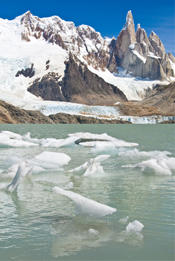FY2009: Measurements and Standards for the Climate Change Science Program
Challenge

Many different climate monitoring systems in space, in the air, and on the ground are currently monitoring solar output as well as trapping and reflection of heat by the Earth's atmosphere. These systems are operated by multiple countries and research groups. The reliability of the resulting information can be—and is—affected by the various measurement techniques and databases used. Establishment of absolute calibration and standard references will allow accurate comparisons of these systems, will help identify small environmental changes occurring over many years, and will reduce uncertainties in the data input to global climate change models.
Proposed NIST Program
With the funding provided through this initiative and in coordination with other agencies, NIST will develop:
an international irradiance measurement scale to be used in rigorously calibrating satellite light intensity instruments prior to launch to ensure sufficient accuracy to allow valid comparisons among results from different instruments or from data sets taken over different periods of time;
new instrument design strategies and quality assurance programs to optimize accuracy and stability of satellite and ground-based solar measurement systems;
techniques for generating specific types of aerosols in the laboratory, measuring aerosol optical and physical properties, and simulating aerosol properties that cannot yet be measured in the laboratory; and
a database of critically evaluated data on aerosol properties collected at NIST and elsewhere.
Expected Impacts
This initiative will fill two critical gaps in data needed for accurate climate modeling:
- enabling the accurate determination of the total amount of sunlight reaching the Earth over specific periods of time; and
- measuring the properties and behavior of aerosols in the atmosphere that impact global climate.
Data collected through these efforts will improve the accuracy of climate change predictions and provide policymakers with better information about the impact of various policy options.

